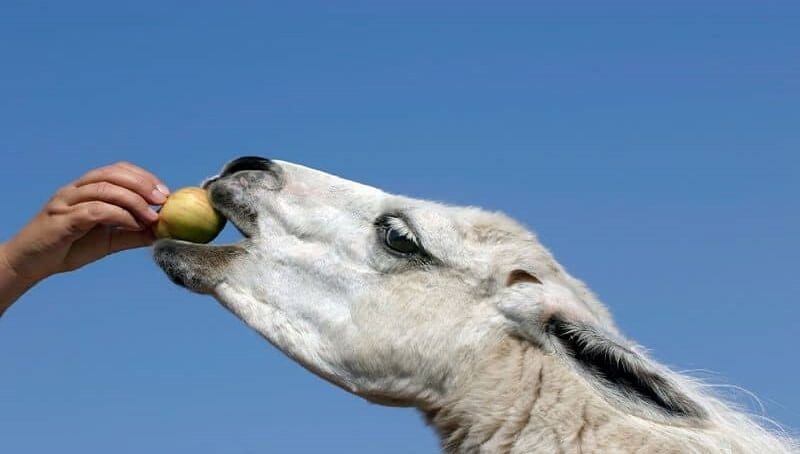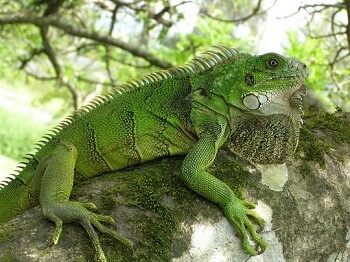
Can Cats Eat Corn?
March 30, 2022
5 Treats Llamas Love to Eat
March 31, 2022
One of the most important things that you, as an owner, have to do for your pets to keep them healthy, is to make sure that you feed them only the appropriate food. Feeding an exotic pet will prove to be a lot more complicated than finding food for your average dog or cat, who basically eats anything around the house. Even though you might know that an iguana will have a plant-based diet, do you actually know what plants can have a negative effect on its body?
It’s not enough to feed it just one vegetable that you surely know will work with the body of an iguana, as you will have to provide it with a diversified diet full of all the needed nutrients for proper growth. You will have to know exactly what foods your pet should avoid and what foods are recommended and safe.
Can iguanas eat cilantro safely, for example?
Iguanas can eat cilantro, but it should be in small amounts and only from time to time. Although cilantro, also known as Chinese parsley, is very nutritious for this reptile, the fact that it contains high amounts of oxalates is what makes it not recommended for daily consumption.
Cilantro for Iguanas: The Good and Bad Parts
Cilantro is a very used fresh herb in cooking and is widely available worldwide. It can be considered a good source of minerals and vitamins for both humans and other creatures, including reptiles like iguanas. Even though the vegetable is considered healthy, iguanas shouldn’t be fed with considerable amounts of cilantro because it contains oxalates.
Also check out my articles on whether bearded dragons can eat grubs or kohlrabi.
When ingested, the oxalates will bind with calcium inside the reptile’s body, making it harder for them to absorb the necessary amount of this mineral. When ingested regularly for too long, the oxalates inside different foods can create nutritional deficiencies, but also kidney issues for iguanas. Other foods that contain high amounts of oxalate, along with cilantro, are:
- Parsley
- Swiss chard
- Beet greens
- Spinach
These foods can be added to your pet’s diet, but in smaller quantities, just like cilantro.
Basic Info on Feeding an Iguana
Unlike some other reptiles, when in the wild iguanas will feed strictly on a herbivore diet. This will include some fruits, vegetables, flowers, and even leaves. A pet iguana’s diet should be comprised almost completely of a plant-based diet, although you can add a maximum of 5% to 10% commercially formulated iguana food.
In a perfect world, the daily diet of an iguana will be made of around 80% to 90% vegetables, with the small amount that is left being fruits. Out of all the vegetables, around half should be of the leafy dark kind, which includes:
- Alfalfa hay
- Bok choy
- Dandelion
- Romaine
- Collard greens
Some other vegetables that should be less than half of the whole diet and should be combined are:
- Peas
- Sweet potatoes
- Carrots
- Green beans
- Squash
There is also a list of safe fruits to be added to an iguana diet, and those are:
- Berries
- Melon
- Tomatoes
- Pears
- Peaches
Iguanas will really like to have a snack from time to time comprised of edible flowers like geraniums, carnations, hibiscus, and others. Before giving your reptile any flowers, make sure that they weren’t sprayed with artificial fertilizers or against bugs. Be very careful with what flowers you actually give to your iguana, because some of them are actually toxic and can put their health in danger. If you’re unsure about one particular flower, ask a vet.
Proteins in an iguana’s diet
Iguanas tolerate high protein foods so badly, that you’re not allowed to feed them even basic foods like pink mice or insects. During their early development, their bodies will tolerate more protein and this is why iguanas can eat more protein-rich foods like some legumes (think pinto or navy beans), but even then, these shouldn’t represent more than 10% of their whole diet.
You can keep this rule for the rest of the iguana’s life, and only feed it around 5% of animal-based proteins or other protein-rich foods. The easiest way to stay save is just sticking to primary fruits and vegetables when feeding your iguana.
Foods To Avoid
 This article has gone through was an iguana can eat, about oxalates and proteins that can hurt it in too high quantities, but are there other foods your pet shouldn’t have?
This article has gone through was an iguana can eat, about oxalates and proteins that can hurt it in too high quantities, but are there other foods your pet shouldn’t have?
There are some foods that would be detrimental to an iguana’s health, damaging its thyroid gland, and those are kale, cabbage, and mustard greens. These should be offered only as treats, from time to time, just like the ones containing oxalates.
There are also some foods that should never be part of the iguana’s diet, because they will prove to be toxic, and these are:
- Tulips
- Daffodils
- Rhubarb
- Eggplant
- Avocado
Never feed your ignuana with a type of food you’re unsure about. Ask your veterinarian beforehand, to avoid any future health issues.
Other Things to Consider
You will have to make sure that your iguana always have clean water and plenty of it for both bathing and drinking. You can also add some dietary supplements to the diet, for a boost in vitamins and calcium. The actual amount or percent of supplements will depend on your iguana’s health and age, and also on what its diet is made of. Don’t pick the supplements yourself; instead, ask your veterinarian about what would work best.
If you have a young iguana, you should feed it once per day. It’s pretty much the same for adult iguanas, that shouldn’t be fed more than once per day. You can even feed the pet once every two days if you want it to lose some weight. You will also have to cut up any food you feed to your iguana in very small pieces, because these reptiles will swallow their food whole, so they don’t have to chew anything.
Final words
Although it sounds complicated, actually feeding the iguana will be one of the easier tasks about owning this reptile. They have very specific needs when it comes to their habitat and care requirements and should be left for more experienced pet owners. Be sure you learn everything there is to know about taking care of such a pet before you bring one home.
